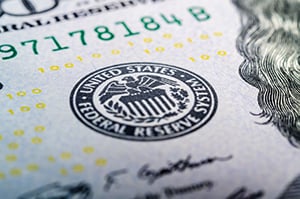 Recently, I’ve received several requests for a high-level overview of the economy. As a blog post, this analysis is necessarily short on details, but I hope it provides a big-picture look at what I see happening in the current economic and market environment.
Recently, I’ve received several requests for a high-level overview of the economy. As a blog post, this analysis is necessarily short on details, but I hope it provides a big-picture look at what I see happening in the current economic and market environment.
The Elephant in the Room
The pandemic is the elephant in the room, so putting it into context is the first order of business. My take is that, despite the high level of infections and the real crises in many areas, from an economic standpoint, the pandemic is over. People and companies have largely accommodated its effects. Therefore, unless we see widespread shutdowns again—which is unlikely—the current wave of infections should subside without derailing the economic recovery.
If U.S. Debt Explodes, What Next?
What about what’s going on in Washington, DC? Between the new administration and the pandemic, politics and policy have taken a back seat in this column for several months. Now that they are front of mind again, the overarching question is: When does everything blow up? The $1.2 trillion infrastructure package looks likely to pass, and the subsequent $3.5 trillion package may also pass. As a result, the debt and the deficit are due to explode. Does this situation fundamentally change the economy?
My take is no. We have been running massive deficits for years now. The current debt packages represent a change in magnitude, not a fundamental change. Moreover, the infrastructure money spent is likely to be productive over time—an investment, really. Finally, while the headline numbers are massive, they will roll in over time, not all at once. On balance, I don’t see the infrastructure deals as a game changer, especially as more stimulative forms of spending, such as supplemental federal unemployment insurance, are being wound down.
No Fundamental Reason for Rates to Rise
Regarding the hot topic of interest rates, there’s one point I want to emphasize. Expectations that interest rates must increase are simply unfounded. Many analysts—me included—have been predicting higher rates for a decade or more. But we have been wrong. It is time we recognize there is no fundamental reason why rates have to be at a certain level. In a market, which is what interest rates are, the price is a function of supply and demand. Given lots of available capital and depressed demand, it is reasonable that rates are staying low.
A Historical Perspective on Inflation
From an interest rate perspective, inflation simply determines the real rate of interest, which is set by market factors. Inflation will therefore be an add-on to interest rates, rather than a fundamental determinant.
Therefore, the effect of the current high inflation rate can be analyzed based on its effect on real rates of interest over time. What the market is telling us—with 10-year Treasury rates back down—is that investors do not think inflation is here to stay, despite the commentary. My take is that this makes sense. The current inflation rate is based on trough-to-peak price changes over one year. If we look at two-year changes, however, inflation is within the recent historical range rather than well above it. Is inflation high? Yes, at the moment. Will it stay that way? No, once the year-on-year comparisons normalize. There are reasons to believe inflation may be moderately higher in the future, but for different reasons—and to a much lesser extent—than we are seeing right now.
What Will the Fed Do?
The longer-term perspective leaves the Fed with much less reason to raise rates than the headline numbers would suggest. I am not concerned about significant increases for the rest of the year. What I do expect is that the Fed will start to reduce policy accommodation, specifically regarding its ongoing bond purchases. As the economy normalizes (which is happening), the rationale for this kind of market manipulation gets less and less convincing. The Fed is showing signs of recognizing this, so I expect it to begin tapering down its purchases within the next couple of months.
Two Metrics to Watch
Finally, I want to consider the effect of the factors discussed above on the economy. Hiring and spending have normalized. Unless we see a massive expansion of the pandemic, they should stay normalized. Business confidence and investment remain healthy. The problems we do see are largely the result of the recovery from the shock of the pandemic, rather than a change in trend. As the recovery continues, we get closer and closer to returning to normal. That is my base case.
What could derail the recovery? More widespread shutdowns would certainly raise the risks, as they would hurt consumer confidence and spending—two of the most important economic metrics. A slowdown in job growth would do the same. In other words, what worries me most is whether the consumer will keep pushing the economy forward. That is what I am watching most closely.
How should we invest in this environment? I will address that topic tomorrow.


 Print
Print

